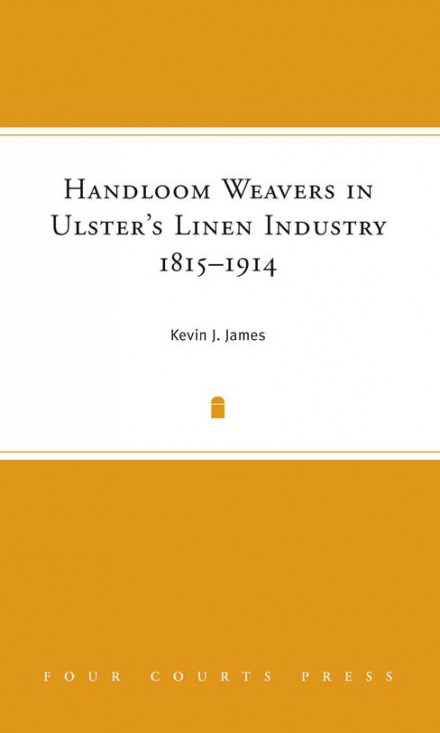Handloom weavers in Ulster's linen industry, 1815–1914
Kevin J. James
'The stamp of the linen industry’s weavers has left an indelible mark on the political, economic, social, cultural, gender and geographical heritage of Ulster. It is written into the very landscape of the province, into our literature and is part of our cultural locus and this book is a remarkable excavation of that heritage and history.’ Dr Máirtín Ó Catháin, Verbal.
‘Despite its title, this book is not about the handloom weaver in Ulster in the tradition of, say, Bythell’s classic study of the handloom weaver in England: it is a case-study of aspects of the handloom weaving sector in the mid-Antrim shirting trade. The focus is primarily on issues of work and gender: the gender composition of the labour force and division of labour, formulations of skill and status between the sexes and “cultural politics” … This is a book that looks at the weaving trade through a lens of feminist and sociological history’, Frank Geary, The English Historical Review (August 2008).
'While the work is overall an accomplished academic text, its centrality to a wider debate about the emergence of the industrialised north-east of Ireland, that region’s perceived ‘difference’, the character of its workforce and even the architectural thumbprint it has left on the land here is all invaluable and fascinating … A major strength is the sheer scope of this ambitious book, covering as it does 99 years between the end of the Napoleonic War and the beginning of World War I … this book has as its focus the changing profile of the linen industry’s traditional workers, the handloom weavers and looks at the impact of technology and gender divisions against a backcloth of the development of rural labour … This book poses a number of questions … it conquers even the disinterested reader in a number of different ways. The stamp of the linen industry’s weavers has left an indelible mark on the political, economic, social, cultural, gender and geographical heritage of Ulster', Mairtin Ó Cathain, Verbal Magazine (March 2010).
'This book is without doubt an intensively researched, scholarly work, the slimness of the volume belying the obvious breadth of information he clearly encountered during his research. It is extensively referenced and provides an enormous wealth of relevant reports, studies and works. In his fact finding, he leaves few stones unturned on the journey from post-famine production through the post-1870 labour organisation and agitation in the face of industrialisation and increased emigration, through to the pre-first world war arts and crafts movement spearheaded by Morris and Ruskin. He provides further evidence of the misogyny that supported the then culture of male proprietorship of the skill of weaving. He explains how men regarded their higher skill status as a '…natural extension of their social authority' (p.16). He incorporates further evidence of how mechanisation shaped society and bolstered capitalist values by encouraging competition – thus enhancing the power of the manufactory owner – that led, ultimately, to the decay of many skilled occupations', Dorothy Calvert, Irish Democrat online reviews (2007).
